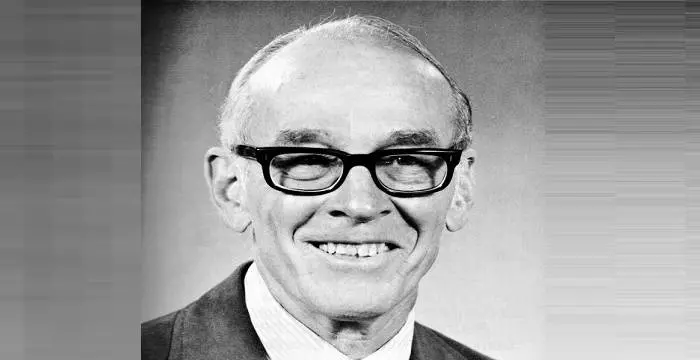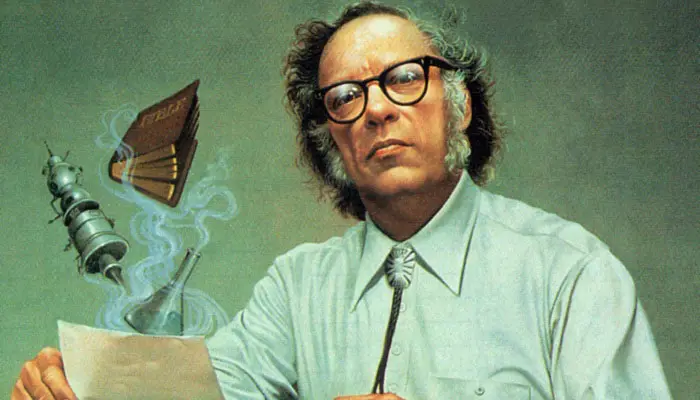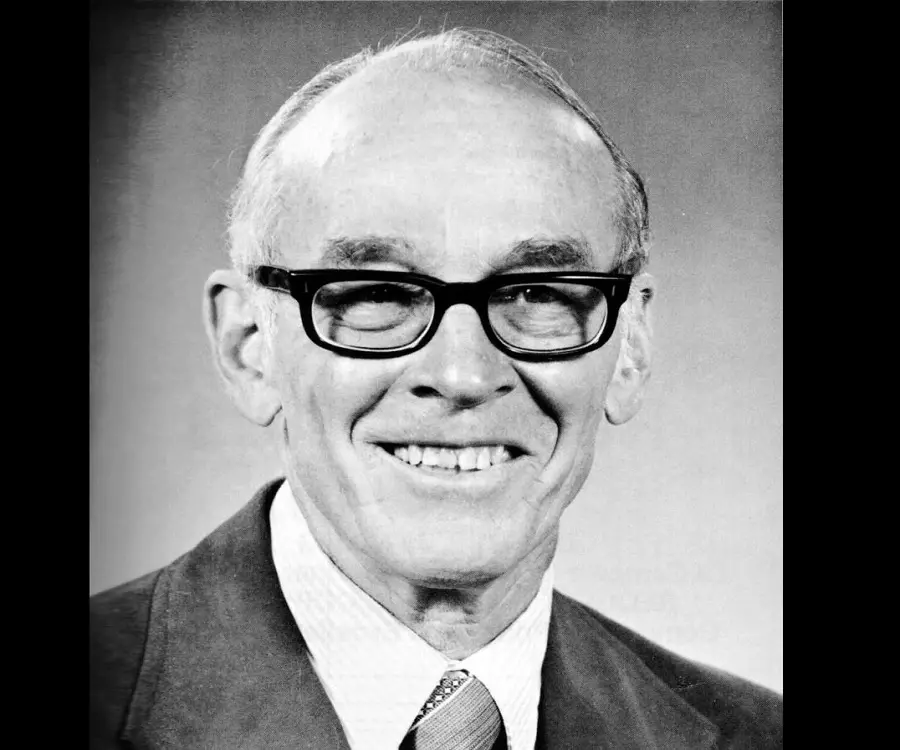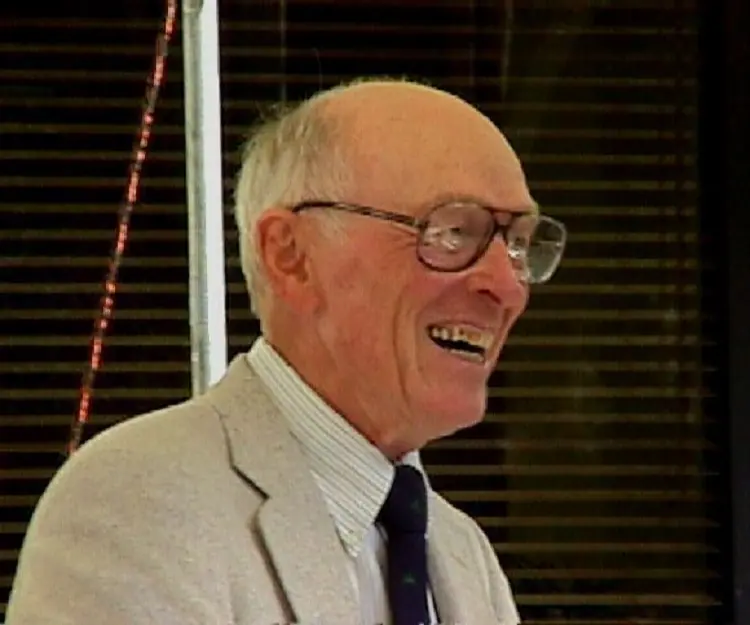
Paul D. Boyer - Biochemists, Life Achievements and Personal Life
Paul D. Boyer's Personal Details
Paul D Boyer is an American biochemist who won the Nobel Prize in Chemistry in 1997
| Information | Detail |
|---|---|
| Birthday | July 31, 1918 |
| Nationality | American |
| Famous | Scientists, Biochemists |
| Spouses | Lyda Whicker |
| Known as | Paul Delos Boyer |
| Childrens | Gail Boyer Hayes |
| Birth Place | Provo, Utah, United States |
| Gender | Male |
| Sun Sign | Leo |
| Born in | Provo, Utah, United States |
| Famous as | Biochemist |
// Famous Biochemists
Robert Huber
Robert Huber is a German biochemist and Nobel Laureate. Check out this biography to know about his childhood, life, achievements, works & timeline.
Charles Best
Charles Best was a great scientist and a renowned physiologist who is remembered for being the co-discoverer of insulin. Read this biography to learn about his profile, childhood, life and timeline.
Isaac Asimov
Isaac Asimov was an American professor of biochemistry and a renowned author of science fiction and popular science books. Read this biography to know more about his life.
Paul D. Boyer's photo
Who is Paul D. Boyer?
Paul Boyer is an American biochemist who was bestowed with the Nobel Prize in Chemistry in 1997 for his research on the enzymatic mechanism underlying the synthesis of adenosine triphosphate. Boyer shared his Nobel Prize with John E Walker and Jens C Skou who independently carried out important work in the field. It was due to Boyer’s intensive research and investigation that the energy that is produced and stored in plants, animals and bacteria making life possible through ATP synthase mechanism, was discovered. While plants photosynthesize the lights through the membranes in chloroplast, in animals the ATP is located in a membrane of mitochondria inside each cell. Boyer also discovered the tiniest rotary machine known to exist in humans. Boyer postulated an unusual mechanism to explain the way in which ATP synthase functions. Known as his ‘binding change mechanism’, it was confirmed by John E. Walker’s research.
// Famous Scientists
Juliane Koepcke
Juliane Koepcke is a German-Peruvian biologist, who was the lone survivor among the 92 passengers and crew of the ill-fated LANSA Flight 508 that crashed in the Peruvian rainforest on 24 December 1971. Know more about her life in this biography.
Henry Cavendish
Henry Cavendish was a theoretical chemist and physicist, renowned for discovery of hydrogen and calculation of the mass of earth. To know more about his childhood, profile, timeline and career read on
Konstantin Tsiolkovsky
Konstantin Tsiolkovsky was a Russian rocket scientist and a pioneer of astronautics. This biography provides detailed information about his childhood, family, personal life, career, achievements, etc.
Childhood & Early Life
Paul Delos Boyer was born on Jul 31, 1918 in Provo, Utah, to Dell Delos Boyer, an osteopathic physician, and Grace Guymon. He had five siblings.
Tragedy struck Boyer’s childhood early as his mother, who was a victim of Addison’s disease breathed her last in 1933, when he was just 15. It was her death that propelled young Boyer’s interest in studying biochemistry.
Academically good, he attained his early education from Provo High School. Later, he enrolled at the Brigham Young University from where he received a BS degree in chemistry in 1939. He also received a Wisconsin Alumni Research Foundation Scholarship for graduate studies.
The scholarship allowed Boyer to take up graduate studies in biochemistry in the University of Wisconsin in Madison. His years at Wisconsin were very influential. Research on vitamins, nutrition and metabolism ruled the environment. Several discoveries were made and numerous patents were done during his time of study by prominent researchers at the department. In 1943, Boyer gained his Ph.D. degree.
Career
At the time when Boyer finished his doctorate studies, the nation was at war. Consequently, he took up a war project at Stanford University. It basically involved studying blood plasma proteins. It was known that concentrated serum albumin fractionated from blood plasma was effective in battlefield treatment of shock. But the same when heated, developed cloudiness from protein denaturation. At Stanford, he developed a stabilization method that was extremely successful.
Following the end of World War II and completion of the war project at Stanford, Boyer accepted an offer for the position of assistant professorship at the University of Minnesota. However, in between, he became a member of the US Navy. He served in the Navy’s Medical Research Institute in Bethesda, Maryland where he carried out private research. In a matter of months, he returned to civilian life at Minnesota.
University of Minnesota offered Boyer better opportunities in biochemistry than Stanford did. He began his independent research career at the University of Minnesota and introduced kinetic, isotopic, and chemical methods for investigating enzyme mechanisms.
In 1955, Boyer received a Guggenheim Fellowship which gave him the opportunity to work with Professor Hugo Theorell on the mechanism of alcohol dehydrogenase at the Nobel Medical Institute.
Following his Guggenheim Fellowship, Boyer accepted a Hill Foundation Professorship that caused him to move to the medical campus at the University of Minnesota. During this period, he carried out the research work on the enzymes rather than ATP synthase. A combined work led to the discovery of a new type of phosphorylated protein, a catalytic intermediate in ATP formation with a phosphoryl group attached to a histidine residue. However, they soon discovered that the enzyme-bound phosphohistidine discovered was an intermediate in the substrate level phosphorylation of the citric acid cycle.
From 1959 to 1960, Boyer served as Chairman of the Biochemistry Section of the American Chemical Society (ACS).
In 1963, he took up professorship at the Department of Chemistry and Biochemistry at the University of California, Los Angeles (UCLA), a position he serves till date.
In 1965, he became the Founding Director of the Molecular Biology Institute and spearheaded the construction of the building and the organization of an interdepartmental Ph.D. program.
For a year between 1969 and 1970, he chaired the seat of the President of the American Society of Biological Chemists.
Despite administrative duties, Boyer did not let his institutional service come in way of his research work. Through the decade of 1950s, he worked on how cells formed ATP. He had realized that energy was a vital source of life and that energy is stored and transported by a special molecule in plants and animals. Boyer began to research on how cells formed ATP.
While Boyer was investigating as to how cells formed ATP, a process that occurs in animal cells in a structure called a mitochondrion, a British chemist Peter Mitchell independently showed that the energy required to make ATP is supplied as hydrogen ions flow across the mitochondrial membrane down their concentration gradient in an energy-producing direction
Boyer’s later work emphasized what is involved in ATP synthesis. Through it, he demonstrated how the enzyme harnessed the energy produced by the hydrogen flow to form ATP out of adenosine diphosphate (ADP) and inorganic phosphate. He came up with a hypothesis that explained an unusual mechanism to explain the way in which ATP synthase functioned.
From 1963 to 1989, Boyer served as the editor of the Annual Review of Biochemistry. During his time there, he served as was Editor of the classic series, ‘The Enzymes’. Meanwhile in 1981, he served as the Faculty Research Lecturer at UCLA.
In 1990, he was made Professor Emeritus of the Molecular Biology Institute that he had helped set up.
Major Works
Boyer’s most significant work came when he explained the enzymatic mechanism underlying the synthesis of adenosine triphosphate. While in the 1950s he began research of how cells formed ATP, later he focussed his research to find out what is involved in ATP synthesis. His work focused on the enzyme ATP synthase, and he demonstrated how the enzyme harnesses the energy produced by the hydrogen flow to form ATP out of adenosine diphosphate (ADP) and inorganic phosphate. Boyer came up with an unusual mechanism, known as the binding change mechanism, to explain how ATP synthase functioned.
Awards & Achievements
In 1955, he received the Paul Lewis Award in Enzyme Chemistry. Same year, he won the American Chemical Society Award and the Guggenheim Fellowship in Sweden.
In 1976, he received the UCLA McCoy Award.
In 1981, he received the prestigious Tolman Medal by the Southern California Section of the American Chemical Society.
In 1989, he received the Rose Award from the American Society for Biochemistry and Molecular Biology.
In 1997, Boyer received the prestigious Nobel Prize in Chemistry for elucidation of the enzymatic mechanism underlying the synthesis of adenosine triphosphate (ATP). He shared one-half of the prize with John E Walker. The second half was presented to Jens C Skou for his discovery of Na+/K+ ATPase.
In 1998, he was awarded the UCLA Medal, the American Academy of Achievement Golden Plate Award, the American Philosophical Society Award, and Seaborg Award, UCLA.
He was made fellow of the American Academy of Arts and Sciences and National Academy of Sciences.
He gained the honorary doctorate from the various universities including University of Stockholm, University of Minnesota and University of Wisconsin
Personal Life & Legacy
Boyer married Lyda Whicker just after finishing studies at Provo High School. The couple is blessed with three children, Gail Boyer, Alexander Boyer and Douglas Boyer. They have eight grandchildren.
Currently, Boyer resides at his family home in the hills north of UCLA, where he conducts his research and studies.
In 1999, a hall in UCLA was dedicated to Boyer to mark his legacy in scientific world. It was named after him and is today widely known as the Paul D. Boyer Hall.
// Famous Leo Celebrities peoples
Eugenia Cooney
Check out all that you wanted to know about Eugenia Cooney, the famous American Vlogger & YouTube Personality; her birthday, her family and personal life, her boyfriends, fun trivia facts and more.
Princess D
Princess D (Destiny Indira Cox) is an American rapper, dancer and social media personality. Let’s have a look at her family and personal life including age, birthday, net worth, and fun facts.
Payton Moormeier
Payton Moormeier is an American social-media personality best known for his musical.ly videos. Check out this family, personal life, etc.
Paul D. Boyer's awards
| Year | Name | Award |
|---|---|---|
Other | ||
| 0 | 1997 - Nobel Prize in Chemistry | |
| 0 | 1955 - Guggenheim Fellowship for Natural Sciences | |
| 0 | US & Canada | |
| 0 | 1989 - William C. Rose Award | |
Paul D. Boyer biography timelines
- // 31st Jul 1918Paul Delos Boyer was born on Jul 31, 1918 in Provo, Utah, to Dell Delos Boyer, an osteopathic physician, and Grace Guymon. He had five siblings.
- // 1933Tragedy struck Boyer’s childhood early as his mother, who was a victim of Addison’s disease breathed her last in 1933, when he was just 15. It was her death that propelled young Boyer’s interest in studying biochemistry.
- // 1939Academically good, he attained his early education from Provo High School. Later, he enrolled at the Brigham Young University from where he received a BS degree in chemistry in 1939. He also received a Wisconsin Alumni Research Foundation Scholarship for graduate studies.
- // 1943The scholarship allowed Boyer to take up graduate studies in biochemistry in the University of Wisconsin in Madison. His years at Wisconsin were very influential. Research on vitamins, nutrition and metabolism ruled the environment. Several discoveries were made and numerous patents were done during his time of study by prominent researchers at the department. In 1943, Boyer gained his Ph.D. degree.
- // 1955In 1955, Boyer received a Guggenheim Fellowship which gave him the opportunity to work with Professor Hugo Theorell on the mechanism of alcohol dehydrogenase at the Nobel Medical Institute.
- // 1955In 1955, he received the Paul Lewis Award in Enzyme Chemistry. Same year, he won the American Chemical Society Award and the Guggenheim Fellowship in Sweden.
- // 1959 To 1960From 1959 to 1960, Boyer served as Chairman of the Biochemistry Section of the American Chemical Society (ACS).
- // 1963In 1963, he took up professorship at the Department of Chemistry and Biochemistry at the University of California, Los Angeles (UCLA), a position he serves till date.
- // 1965In 1965, he became the Founding Director of the Molecular Biology Institute and spearheaded the construction of the building and the organization of an interdepartmental Ph.D. program.
- // 1969 To 1970For a year between 1969 and 1970, he chaired the seat of the President of the American Society of Biological Chemists.
- // 1976In 1976, he received the UCLA McCoy Award.
- // 1981In 1981, he received the prestigious Tolman Medal by the Southern California Section of the American Chemical Society.
- // 1989In 1989, he received the Rose Award from the American Society for Biochemistry and Molecular Biology.
- // 1990In 1990, he was made Professor Emeritus of the Molecular Biology Institute that he had helped set up.
- // 1997In 1997, Boyer received the prestigious Nobel Prize in Chemistry for elucidation of the enzymatic mechanism underlying the synthesis of adenosine triphosphate (ATP). He shared one-half of the prize with John E Walker. The second half was presented to Jens C Skou for his discovery of Na+/K+ ATPase.
- // 1998In 1998, he was awarded the UCLA Medal, the American Academy of Achievement Golden Plate Award, the American Philosophical Society Award, and Seaborg Award, UCLA.
- // 1999In 1999, a hall in UCLA was dedicated to Boyer to mark his legacy in scientific world. It was named after him and is today widely known as the Paul D. Boyer Hall.
// Famous American peoples
Wentworth Miller
Wentworth Miller is an American actor and screenwriter who achieved recognition for his role in the TV series ‘Prison Break’.
Jason Simpson
Jason Simpson is the son of former NFL running back, broadcaster and actor O. J. Simpson. Check out this biography to know about his childhood, family, life, and little known facts about him.
Melissa Brim
Melissa Brim is the ex-girlfriend of former professional boxer Floyd Mayweather Jr. Check out this biography to know about her birthday, childhood, family life, achievements and fun facts about her.
Skai Jackson
Skai Jackson is an American child actress with huge fan following. Find more about her family & personal life, relationships, facts and more.
Joyce Meyer
Joyce Meyer is a Christian author and speaker. This biography provides detailed information about her childhood, life, achievements, works & timeline
Zoe LaVerne
Zoe LaVerne is an American musical.ly star. Check out this biography to know more about her family, personal life, including her age, birthday, etc.
Paul D. Boyer's FAQ
What is Paul D. Boyer birthday?
Paul D. Boyer was born at 1918-07-31
Where is Paul D. Boyer's birth place?
Paul D. Boyer was born in Provo, Utah, United States
What is Paul D. Boyer nationalities?
Paul D. Boyer's nationalities is American
Who is Paul D. Boyer spouses?
Paul D. Boyer's spouses is Lyda Whicker
Who is Paul D. Boyer childrens?
Paul D. Boyer's childrens is Gail Boyer Hayes
What is Paul D. Boyer's sun sign?
Paul D. Boyer is Leo
How famous is Paul D. Boyer?
Paul D. Boyer is famouse as Biochemist
















